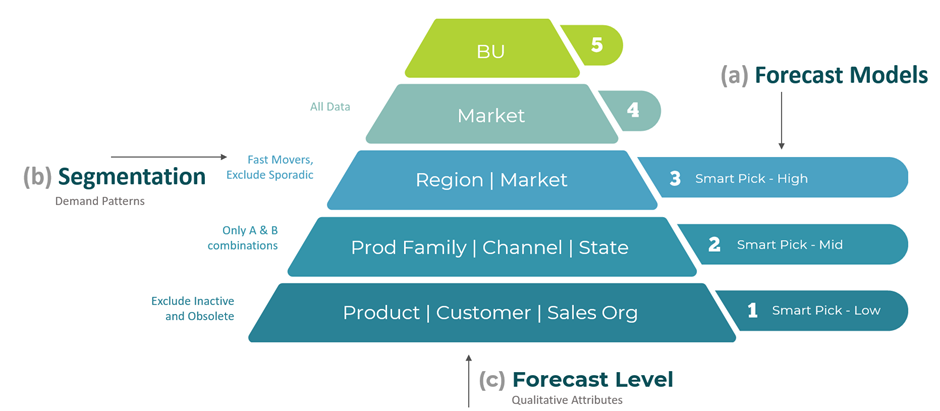
Welcome to a visionary glimpse into the future of demand planning! As we step into the dynamic landscape of 2024, it's time to cast our eyes forward and envision the optimal strategies, tools, and innovations that can elevate your demand planning process to new heights.
This blog is part of a series of 3 topics that should be in your 2024 demand planning enhancement wish list. Our journey begins with this first part, where we explore the transformative realm of ML Augmented statistical forecasting.
Does the description "Yes", we have statistical forecasting but we never touch it because it still works" sound familiar? It's a pattern we often see recurring at clients. The statistical forecasting has been configured once many years ago during a blueprinting session or by trial and error by the implementation consultant. However, this can result in suboptimal results, which are eating into your company's profits. It's no longer acceptable to use your pre-COVID statistical forecasting set-up! Business and markets evolve, so your forecasting processes should evolve as well!
An automated way of evaluating and optimizing your forecasting strategy is through the use of machine learning. An Advanced Planning System (APS) has the capabilities to automatically look for accurate forecasting strategies. It applies branch and bound machine learning techniques to optimize three major components of the forecasting strategy.
The module is able to determine whether using multiple (hierarchical forecasting) levels is ameliorating the prediction performance, or whether forecasting on 1 level is sufficient. Additionally, the module is able to determine which levels are important so you also get insights in valuable (dependent) dimensions in your data; these might be interesting to look at during the later stages of the demand planning process.
The module is able to verify whether demand pattern segmentation improves forecast accuracy. This means that based on the demand pattern (stable, seasonal, intermittent,...) it can result in a more accurate forecast if the tested forecast methods are explicitly linked to the pattern (think Holt Winter's method for seasonal, exponential smoothing methods for stable,...)
Next to linking the forecast models to the demand pattern the module can also use a novel way of selecting the used forecast model. Next to using the error on the validation set, it also checks historical match with the training set. This ensures that the forecast method is not selected on the match during the validation set alone, which can be influenced by seasonality and other factors (and can sometimes lead to a better forecast!)
The figure below provides a comprehensive overview of the dimensions.

These projects can significantly improve your forecast accuracy, even for mature demand planning organizations. For a mature client, performing ML Augmented Statistical Forecasting analyses resulted in an elevation in forecast maturity, and a forecast accuracy boost from 69% to 77%.
Lastly, we’d like to emphasize that regular re-assessment of the statistical forecast strategy should be in the back of your head. Doing stand-alone analyses (with implementation) will improve your forecast, but it is recommended to re-assess with a frequency based on that is the volatility of your business. This ensures your forecast accuracy remains optimal.
The following articles may also be interesting for you:
These Stories on External data